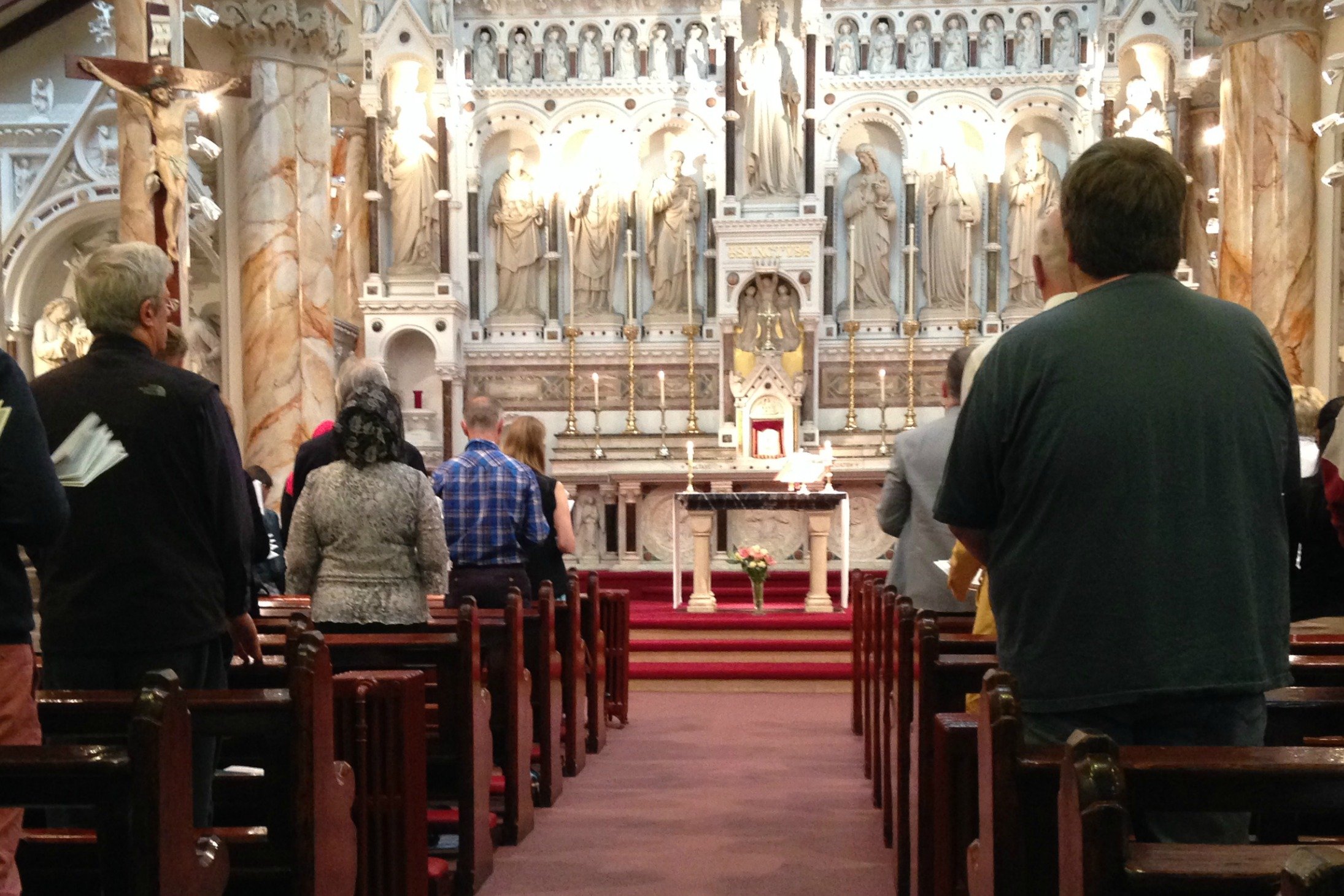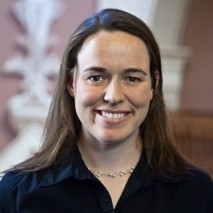Previously in this series: A Theology of Liturgical Evangelization: Part 1, Part 2, and Part 3
To experience more liturgical evangelization, we need to resist certain temptations and distractions. Our theological confidence in liturgy as inherently evangelistic, and evangelization as inherently liturgical, is shaken by discussions (sadly even escalating to less-than-charitable debates) where we: 1) seek a universal prescription for conversion that places liturgy and personal response in competition, or 2) reduce liturgy and/or evangelization to utilitarian tasks and standards. In this Part 4, I suggest that pitting liturgy against initial proclamation and response to the Gospel (or vice versa) is a false distinction with no place in authentic liturgical evangelization.
The Constitution on the Sacred Liturgy states plainly: “Before men can come to the liturgy they must be called to faith and to conversion” (§9). Yet, it would be wrong to inject our own mental corollary—that experiences of liturgy or “habits of worship” in a school, family, or parish prior to conversion are meaningless, unimportant, or universally bad.[1] As Timothy O’Malley explains:
The habit of worship is “evangelizing” because it creates within the family a new way of life. Even if this habit is initially performed in a perfunctory manner, it gradually permeates the culture of the family, disposing the child and parents alike toward the gift of worship.[2]
The key word is disposing. Doing liturgy in any form shapes an individual’s disposition by wrapping him or her in Christian witness—usually the witness of those present for the liturgical prayer or action, but also the witness of memory and communion with the saints. Liturgical habits can provide words and actions ready to become the response of conversion, once the initial, missionary proclamation of the Gospel is heard and responded to.[3]
Describing St. Augustine of Hippo’s conversion, Aidan Kavanagh, OSB writes:
The Church’s discipline of worship did not produce Augustine’s faith, but it does seem to have prodded its emergence, given it its foundation in the real order of time, and shaped it to the point that it became recognizable to Augustine himself and accessible to others.[4]
We have no reason to think that the relationship between our worship and our beliefs has become less potentially interrelated in modern times. I came to liturgy (specifically the Mass) many times, hundreds of times, before I had my foundational response to the Gospel of salvation. But I never really came to the liturgy. I was at Mass—reverent, serious, attentive, participating in various ministries—but I had not come to the liturgy in the true, full, thick sense of liturgy. I had not come with the matter for the Holy Spirit to burn, the askesis to be combustible.[5] Before I could come in this way, I needed to personally respond to the call to faith and conversion—a “gift of God, a work of the Blessed Trinity.”[6] This response of conversion is “expressed in faith which is total and radical, which neither limits nor hinders God’s gift”; it “means accepting, by a personal decision, the saving sovereignty of Christ and becoming his disciple” (Redemptoris Missio, §46).
Concluding On Liturgical Asceticism, David Fagerberg explains, “Baptism drops the spirit of the Holy One into our veins, but there is no fire where there is not matter to burn. Askesis [discipline] makes us combustible.”[7] Once I experienced that personal decision and became a disciple of Jesus Christ in the Holy Spirit, the disciplines of loving and serving Jesus as Lord ignited what Baptism already (over a decade earlier) dropped into my veins. I could truly come to the liturgy in Spirit and truth, liturgies that I had only previously attended. “Habits of worship” not only disposed me for this conversion, but enabled me to receive the gift of worship afterwards.
I vividly recall praying the Glory to God in, with, and through the Holy Spirit, finally knowing Jesus as friend, Lord, and Savior. The words were the same as they had been when I sang it as a “perfunctory” prayer, but now I had experienced the conversion that enabled me to come to the liturgy. Had I not been disposed through the habits of worship spurred by my parents’ discipline in attending Sunday Mass and volunteering me for music ministry and altar serving, I likely would have never known the words of the Glory to God or even felt welcome at a Catholic Mass. The point is not to dissect this story of my faith (nor Augustine’s) in order to determine “which came first,” as if liturgy and conversion were a chicken and egg proposition that could be repeated for every unique individual.
Dissection reduces liturgical evangelization to formula, as if attempting to control or harness the Holy Spirit like a river powering a mill. Yet, when we don’t pay attention to the wisdom of the Council—that all men and women must be called to conversion—we can create the conditions for liturgy that render it thin and burdensome, rather than as a gift. Speaking to the USCCB, Curtis Martin remarked that when asking young adults, “How’s that Catholic thing going for ya?” the “overwhelming response” was, “This Catholic thing is really tough!” He explained:
That is because young people are going through life trying to sell all they have to find a treasure. But that isn’t how the parable goes. In the story, the man found the treasure first [cf. Mt 13:44]. That treasure is one’s encounter with Christ’s love and the knowledge of His plan of salvation for each one of us.
When done without the treasure, liturgy remains thin. When done by too many without the treasure for too long, liturgy loses its inherent evangelistic power.
Kavanagh settles our unnecessary debates, asserting, “Christians do not worship because they believe” and “Christians do not believe before they worship, at least not in the sense that liturgy is a machine which can be counted on to produce a product called faith on any and all occasions. This would be a sort of liturgical Pelegianism.”[8] Yet how hard it is for us to resist the tempting distraction to dissect and debate in this way! To think, if I could only convince so-and-so that liturgical beauty is the way to conversion in our secular world, then we could really evangelize, or, if I could only convince so-and-so that liturgy without personal belief is a waste, then we could really evangelize—these are both distractions from the fullness of liturgical evangelization as the Spirit-filled Church in motion.
Instead, be encouraged to keep it both simple and expansive. We must be called to faith and to conversion before we can “come” to the liturgy in the full, thick sense. Yet where, when, and how we hear and respond to the announcement of the “good tidings of salvation” will vary greatly. For some it could come in a Eucharistic homily, since for many this is their “primary encounter with the Church” in a way that is most directly accessible.[9] For some it could come in an Alpha course at a local parish. For some it could come through a conversation with a peer who witnesses and explains how a person can respond to the love of God. Some can name the day and hour it happened, and others can remember the time they realized (in retrospect) that their heart had changed, without ever knowing the exact date when it happened. Yet, these examples don’t even begin to probe the many moments of pre-evangelization—a spark of unexpected curiosity, a new reason to trust, etc.—that served as the pathway leading to conversion of heart and life![10]
The point is that if we’re debating the relative importance of where, when, and how liturgy and evangelization occur, we’re dissecting the reality of liturgical evangelization as a unified whole. As Romano Guardini wrote, in the liturgy, “man, with the aid of grace, is given the opportunity or realizing his fundamental essence, of really becoming that which according to his divine destiny he should be and longs to be, a child of God.”[11] Similarly, Kavanagh observes that signals of liturgical change, of the crucial subjective response, “always happens to some extent as the daily fare of those who have received and live by the promise of One who said ‘I am with you always.’”[12] Thus the parish Liturgy Coordinator is as interested in every parishioner’s personal relationship with God as the Discipleship Coordinator, and the Discipleship Coordinator as concerned with the palpable signs of change, of doing liturgy among the assembly, as the Liturgy Coordinator. When this is a regular occurrence, we are doing more liturgical evangelization.
![]()
Featured Photo: J.L. Wong; CC BY 2.0
[1] Timothy O’Malley, “The Habit of Worship, the Domestic Church, and the Pedagogy of Cultural Catholicism,” Church Life vol. 3, no. 4, 36.
[2] Ibid., 37–38.
[3] See “The Process of Evangelization” in the General Directory for Catechesis, §47.
[4] Aidan Kavanagh, OSB, On Liturgical Theology (Collegeville: The Liturgical Press (Pueblo), 1984), 99.
[5] David Fagerberg, On Liturgical Asceticism (Washington, DC: The Catholic University of America Press, 2013), Appendix A #38.
[6] “The Process of Evangelization,” GDC, §47.
[7] Fagerberg, On Liturgical Asceticism, Appendix A #38.
[8] Kavanagh, On Liturgical Theology, 99.
[9] Timothy O’Malley, “Savoring the Mystery: The Formation of Undergraduates in Preaching.”
[10] Framework thresholds used by Sherry Weddell in Forming Intentional Disciples (Huntington, IN: Our Sunday Visitor, 2012).
[11] Romano Guardini, The Spirit of the Liturgy (New York: Crossroad Publications, 1998), 69.
[12] Kavanagh, On Liturgical Theology, 77.



